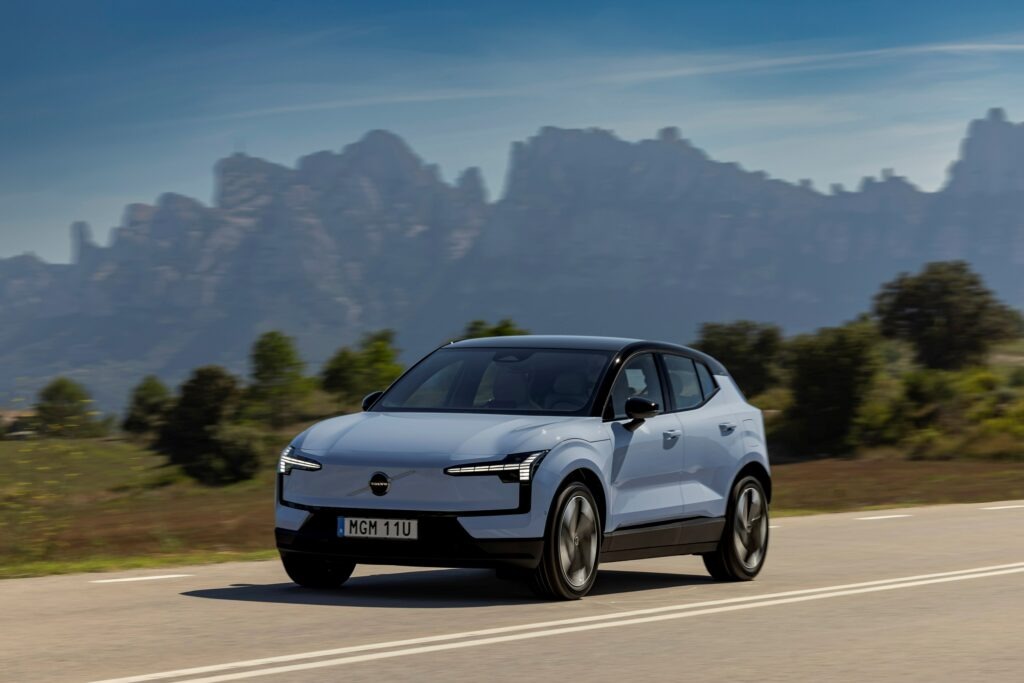Vehicle sales keep growing in US as first-quarter consumer spending reaches record level
21 March 2024

A forecast from J.D. Power points to a robust year-on-year increase in vehicle sales in the US in March. Gains are also expected in the first quarter.
Total new-vehicle sales for March 2024, including retail and non-retail transactions, are projected to reach 1,525,700 units, a 12.1% increase from March 2023. March 2024 has 27 selling days, the same as March 2023.
The seasonally-adjusted annualised rate (SAAR) for total new-vehicle sales is expected to be 16.4 million units, up 1.6 million units from March 2023. New-vehicle total sales for the first quarter of 2024 are projected to reach 3,830,500 units, a 4.5% increase from the first three months of 2023 when adjusted for selling days.
New-vehicle retail sales for March 2024 are expected to reach 1,225,000 units, a 10.7% increase from March 2023. In the first quarter, new-vehicle retail sales are projected to reach 3,066,500 units, a 4.5% increase from the first quarter of 2023 when adjusted for selling days.
Poised for increasing sales
‘March is poised to witness a robust increase in total vehicle sales, which are expected to increase 12.1% from March 2023. Additionally, new-vehicle sales for the first quarter are projected to increase 4.5% from the first three months of 2023 when adjusted for selling days,’ outlined Thomas King, president of the data and analytics division at J.D. Power.
‘In conjunction with robust sales for the first quarter, elevated transaction prices mean that consumers are expected to spend more than $129 billion (€118 billion) buying new vehicles, an all-time first-quarter record.
‘However, while the sales and expenditure performance are impressive, it is coming at the expense of reduced retailer and manufacturer profitability as inventories of unsold vehicles rise and competitive pressures intensify,’ he continued.
Retail inventory levels are expected to finish around 1.7 million units, a 4.2% increase from February 2024 and a 39.3% increase from March 2023.
The fleet mix is projected at 19.7%, up 1 percentage point (pp) from March 2023 and up 18.4% on a volume basis, as several manufacturers increase their focus on fleet sales as a mechanism to address excess inventory.
Largest ever March decline
‘The average new-vehicle retail transaction price is declining as manufacturer incentives rise, retailer profit margins fall and availability of lower-priced vehicles increases. Transaction prices are trending towards $44,186 — down $1,648 or 3.6% — from March 2023, the largest decline in March ever,’ King stated.
However, despite that, higher sales volumes mean consumers are on track to spend nearly $51 billion on new vehicles this month — the highest ever for the month of March and 6.5% higher than March 2023.
‘Total retailer profit per unit — which includes vehicles gross plus finance and insurance income — is expected to be $2,487, down 31.9% from March 2023. Rising inventory is the primary factor behind the profit decline and fewer vehicles are selling above the manufacturer's suggested retail price (MSRP). Thus far in March, only 15.7% of new vehicles have been sold above MSRP, which is down from 31% in March 2023,’ he said.
Total aggregate retailer profit from new-vehicle sales for this month is projected to be $2.9 billion, down 24.8% from March 2023.
‘Rising inventory means fewer vehicles are being pre-sold by retailers, with more shoppers able to buy directly off dealer lots. This month, J.D. Power projects that 31.7% of vehicles will sell within 10 days of arriving at the dealership, down from a peak of 58% in March 2022. The average time a new vehicle remains in the dealer's possession before sale is expected to be 45 days, marking a 15-day increase from a year ago,’ King explained.
Discounts expected to rise
‘Manufacturer discounts are expected to rise $170 from a month ago and have materially increased from a year ago. The average incentive spend per vehicle has grown 66.6% from March 2023 and is currently on track to reach $2,800. Expressed as a percentage of MSRP, incentive spending is currently at 5.8%, an increase of 2.2pp from a year ago.
‘One of the drivers of higher incentive spending is the increased availability of lease deals, and leasing is growing accordingly. This month, leasing is expected to account for 24.8% of retail sales, up 5.3pp from 19.6% in March 2023,’ King added.
After rising consistently during the past few years, average monthly loan payments are stabilising. The average monthly finance payment this month is on pace to be $722, flat from March 2023. The average interest rate for new-vehicle loans is expected to be 6.8%, an increase of 13 basis points from a year ago (with 1 basis point equal to 0.01%).
Used retail prices falling
So far in March, average used-vehicle retail prices are $27,950, reflecting a 4.3% — or $1,248 — decrease from a year ago. The decline in used-vehicle values is translating to lower trade-in equity for owners, now trending towards $7,558, which is down $1,404 from a year ago.
‘With the first quarter of 2024 almost complete, the industry is continuing along its trajectory back to pre-pandemic market dynamics. The bias is shifting from low sales volumes/high prices (and profits) to higher sales volumes/lower prices. That said, transaction prices and retailer profits remain well above pre-pandemic levels, while manufacturer discounts are well below,’ King continued.
‘This means that, although 2024 will not deliver the record profits observed in recent years, it will likely be the fourth most profitable year on record for retailers. However, rising inventories and rapidly intensifying competition for buyers mean that aggregate industry transaction prices and per unit profitability will likely deteriorate throughout the year.’
The details
- Average incentive spending per unit in March is expected to reach $2,800, up from $1,680 in March 2023. Spending as a percentage of the average MSRP is expected to increase to 5.8%, up 2.2pp from March 2023.
- Average incentive spending per unit on trucks/SUVs in March is expected to be $2,964, up $1,219 from a year ago, while the average spending on cars is expected to be $2,180, up $750 from a year ago.
- Retail buyers are on pace to spend $51 billion on new vehicles, up $3.1 billion from March 2023.
- Trucks/SUVs are on pace to account for 79% of new-vehicle retail sales in March.
- Fleet sales are expected to total 300,702 units in March, up 18.4% from March 2023 on a selling day-adjusted basis. Fleet volume is expected to account for 19.7% of total light-vehicle sales, up 1pp from a year ago.
- Average interest rates for new-vehicle loans are expected to increase to 6.8%, 13 basis points higher than a year ago.
EV retail share rebound
‘Electric vehicle (EV) monthly retail share has rebounded from the declines reported in January and February. EV retail share is tracking at 9.1%, almost matching last year’s high of 9.2% in December,’ highlighted Elizabeth Krear, vice president, electric vehicle practice at J.D. Power.
‘Upper-funnel EV shopper interest declined for a fifth consecutive month. New-vehicle shoppers who are ‘very likely’ to consider purchasing an EV for their next vehicle dropped to 22.5%, 1.9pp lower than in February. Shoppers continue to cite lack of charging station availability as the top reason for rejecting EVs.
‘The Environmental Protection Agency (EPA) final rule that was announced this week relaxes EV adoption requirements for 2027-2030. This not only aligns better with consumer interest in EVs but also gives the ecosystem more time to ramp up,’ she said.
‘The EPA rule relaxes EV adoption to 56% by 2032, which is just slightly above our EV baseline forecast for 2032 of 54%. The rule also allows for the opportunity to develop plug-in hybrids (PHEVs) and other more fuel-efficient technologies.
‘Interestingly, however, based on the J.D. Power Electric Vehicle Experience (EVX) Ownership Study, satisfaction is lower among owners of PHEVs than owners of full battery-electric vehicles,’ Krear commented.



